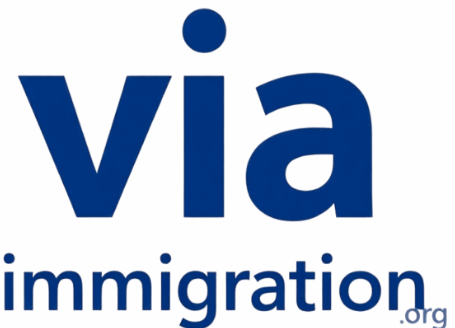Canada’s Immigration Levels Plan for 2025–2027 outlines the country’s long-term strategy to welcome newcomers. This updated plan focuses on attracting skilled workers, reuniting families, and supporting humanitarian efforts while promoting economic growth and addressing labor shortages.
The Canadian government has once again demonstrated its commitment to nation-building by announcing ambitious immigration targets that extend over the next three years. The plan reflects the importance of immigrants in shaping Canada’s future while balancing economic needs and public services.
Main Goals of the Immigration Plan
The immigration levels plan is based on a clear vision with multiple goals. Each goal supports the broader national interest:
- Strengthening the Economy: Skilled immigrants will help fill labor market gaps across multiple industries, especially health care, technology, construction, and transportation.
- Family Reunification: Immigration pathways will prioritize bringing families together under family-class sponsorship.
- Humanitarian Support: Refugees and displaced individuals will continue to be welcomed under Canada’s humanitarian commitments.
- Regional Development: Newcomers will be encouraged to settle in smaller cities and rural areas through regional immigration programs.
- System Efficiency: Investments will be made to improve application processing times and reduce backlogs.
Annual Immigration Targets: 2025–2027
The Canadian government has outlined the number of permanent residents (PRs) it plans to welcome each year. Below is a table summarizing the immigration targets:
| Year | Total Number of Newcomers | Economic Class | Family Class | Refugees & Humanitarian |
|---|---|---|---|---|
| 2025 | 485,000 | 281,135 | 114,000 | 89,865 |
| 2026 | 500,000 | 301,250 | 118,000 | 90,750 |
| 2027 | 500,000 | 303,850 | 119,000 | 87,150 |
- Economic Class makes up the largest share of newcomers each year.
- Family Class numbers gradually increase to support reunification.
- Refugees and Humanitarian efforts remain a priority, with slightly declining figures to balance resource allocation.
Breakdown by Immigration Categories
Here is a closer look at each immigration category and what the plan includes:
1. Economic Class Immigration
The economic class will receive the highest share of permanent resident spots. Programs under this category include:
- Federal Skilled Worker Program (FSWP)
- Federal Skilled Trades Program (FSTP)
- Canadian Experience Class (CEC)
- Provincial Nominee Program (PNP)
- Atlantic Immigration Program
- Rural and Northern Immigration Pilot
| Program | Focus Area |
|---|---|
| Federal Programs (FSWP/FSTP/CEC) | Skilled workers and tradespeople |
| Provincial Nominee Program (PNP) | Province-specific labor market needs |
| Atlantic Immigration Program | Workforce support in Atlantic provinces |
| Rural & Northern Pilot | Regional development and population growth |
2. Family Class Immigration
Family reunification remains a central priority. Under this category, Canadian citizens and permanent residents can sponsor:
- Spouses and common-law partners
- Dependent children
- Parents and grandparents
| Category | Details |
|---|---|
| Spousal Sponsorship | For married or common-law partners |
| Child Sponsorship | For dependent children under 22 years old |
| Parent/Grandparent Sponsorship | Subject to annual intake caps and lotteries |
3. Refugees and Protected Persons
Canada continues to support international humanitarian efforts by welcoming:
- Government-assisted refugees
- Privately sponsored refugees
- Blended visa office-referred (BVOR) refugees
- Protected persons in Canada and dependents abroad
| Type of Refugee | Support Provided |
|---|---|
| Government-Assisted Refugees | Supported by federal programs and resettlement services |
| Privately Sponsored Refugees | Sponsored by organizations or community groups |
| BVOR Refugees | Cost-shared between government and private sponsors |
| Protected Persons | Includes asylum seekers and vulnerable groups |
Why These Targets Matter
The new plan ensures that immigration continues to benefit Canadian society in the following ways:
- Addresses aging population by introducing younger workers into the labor force.
- Supports economic recovery from inflation and global uncertainty.
- Boosts innovation and entrepreneurship with fresh global talent.
- Promotes cultural diversity and multiculturalism as core Canadian values.
- Maintains Canada’s global reputation as a welcoming, humanitarian nation.
Highlights of New Measures and Strategies
To support the successful implementation of the plan, the government has announced several supporting initiatives:
- Digital Transformation: Continued investment in technology for faster application processing and reduced backlog.
- Regional Immigration Growth: Expansion of regional programs to help less populated provinces attract immigrants.
- Francophone Immigration: Increase in French-speaking newcomers outside Quebec.
- Sector-Specific Pathways: Development of immigration streams targeted at priority industries like healthcare, education, and IT.
| New Strategy | Purpose |
|---|---|
| Tech Improvements | Faster, more transparent immigration processing |
| Regional Development Programs | Encourage settlement in underpopulated areas |
| Francophone Immigration Boost | Support French-speaking communities nationwide |
| Occupation-Based Selection | Meet labor shortages in specific job categories |
Public Consultation and Transparency
The Canadian government invited feedback from provinces, territories, businesses, and the public before finalizing the 2025–2027 plan. This collaborative approach helps shape a well-balanced system based on actual needs.
- Provinces provided input to align immigration with labor demand.
- Employers voiced the need for faster skilled-worker approvals.
- Community groups stressed support for family and refugee pathways.
Comparison with Previous Years
Compared to the previous Immigration Levels Plan, this updated version reflects a steady rise in immigration targets, particularly in the economic class.
| Year | Total Immigrants Admitted |
|---|---|
| 2022 | 437,000 |
| 2023 | 465,000 |
| 2024 | 485,000 |
| 2025 | 485,000 |
| 2026 | 500,000 |
| 2027 | 500,000 |
This steady increase shows Canada’s long-term commitment to welcoming immigrants while managing growth responsibly.
The Bottom Line
Canada’s Immigration Levels Plan 2025–2027 sends a clear message: immigration is not just a policy—it’s a cornerstone of national progress. By planning to welcome 1.485 million new permanent residents over three years, Canada is investing in its future workforce, economic resilience, and social strength. With an inclusive, responsive, and structured approach, the nation remains one of the world’s most welcoming destinations for newcomers.

